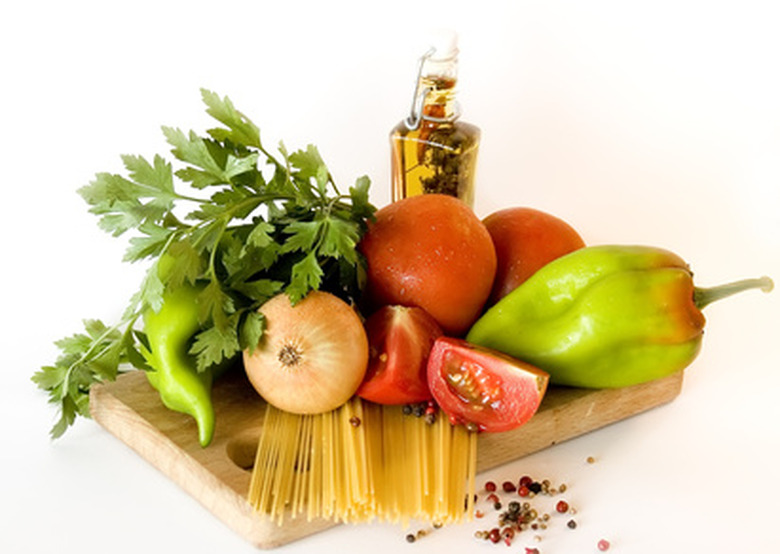What Vegetables Are Good To Grow On Hillsides?
Although many gardeners select flat, level areas for vegetable gardening, many of the plants they love can grow well on slopes and hillsides. While some vegetables display characteristics that limit their growing options and make them unsuitable for hillside gardens, others thrive and flourish on sloped areas. Unlike some vines and groundcovers, vegetable plants require at least minimal terracing to form favorable planting areas. While the bottom of your slope may retain cool temperatures, the middle to upper portion provides adequate conditions for several types of vegetables.
Lettuce
This salad staple comes in a variety of sizes, colors and shapes. The compact growth habit makes lettuce suitable for hillside areas. Plant bib lettuce, head lettuce and leaf lettuce late in the fall to enjoy fresh produce in the late spring. In areas with hard freezes, such as climates in Zone 4 and cooler, plant lettuce in the spring. Plant these small seeds under a fine layer of mulch to help hold in soil temperatures and adequate amounts of moisture. Keep the soil slightly moist, applying about 1 inch of water when the surface of the slope shows signs of dryness.
- Although many gardeners select flat, level areas for vegetable gardening, many of the plants they love can grow well on slopes and hillsides.
- While some vegetables display characteristics that limit their growing options and make them unsuitable for hillside gardens, others thrive and flourish on sloped areas.
Carrots
Carrots' strong, tapering roots help to hold the soil in place on hillsides and slopes, guarding against wind and soil erosion. Plant carrot seeds early in the spring, as soon as the soil thaws. Insert them ¼ inch below the surface of the soil. Thin the carrot seedlings about 2 to 3 inches apart. Allow at least 18 inches between each row of carrots in a hillside garden.
Peppers
Small pepper plants thrive on warm, sunny slopes and hillsides. Plant these near the top of your hillside garden to ensure warm temperatures and full sunlight. Plant pepper seeds indoors, about six weeks before the last frost of the season. Transplant the seedlings into the hillside garden after the temperatures begin to stay above freezing. Plant those about 15 inches apart to allow sufficient space for future growth and airflow. Keep the soil slightly moist near the pepper plants' roots, applying about 1 inch of water each week.
- Carrots' strong, tapering roots help to hold the soil in place on hillsides and slopes, guarding against wind and soil erosion.
- Transplant the seedlings into the hillside garden after the temperatures begin to stay above freezing.
Radishes
A good choice for small locations and hillside gardens, radishes tolerate a variety of soil conditions and occasional periods of drought. Plant your radish seeds as soon as you can work the soil in the spring. Thin your radishes about 2 to 3 inches apart. During extended dry spells, apply enough water to dampen the soil around their roots.
References
- Arizona Cooperative Extension: Vegetable Garden
- University of Kentucky: Home Vegetable Gardening
- "Principles of Horticulture"; C.R. Adams; 2008
